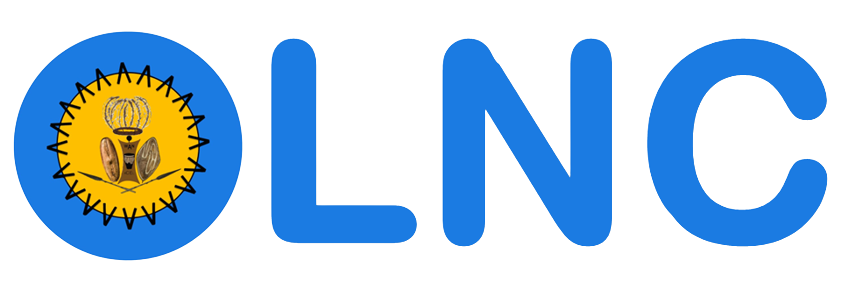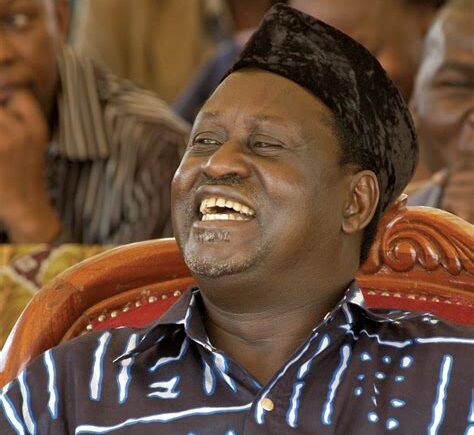Post 2017 election standoff
In a bold and unprecedented move, on 30 January 2018, Raila Odinga took an unofficial oath as the “People’s President” at Uhuru Park, Nairobi, before tens of thousands of his supporters. The event was not sanctioned by the state and was widely viewed as a constitutional provocation. Though largely symbolic, the action captured the public mood in many quarters: disillusionment with electoral justice and a growing rift between state institutions and public sentiment.
The ceremony bore all the hallmarks of resistance. Notably absent were his NASA co-principals Kalonzo Musyoka, Moses Wetang’ula, and Musalia Mudavadi, whose no-shows led to questions about the coalition’s cohesion. Instead, it was Dr. Miguna, a firebrand lawyer and self-styled “General” of the National Resistance Movement (NRM), who administered the oath to Odinga. Miguna had by then emerged as a leading voice in the radical wing of the opposition. His confrontational style and unapologetic defiance of state authority attracted admiration and fear in equal measure.
The government responded swiftly. The broadcast of the swearing-in was blacked out on major TV stations, and soon after, Miguna was arrested and deported to Canada, despite being a Kenyan-born citizen. His treatment was widely condemned as a violation of constitutional rights and due process. Odinga, for his part, maintained silence in the days that followed, neither apologising nor escalating.
Behind the scenes, there were growing fears that Odinga could face treason charges, a crime punishable by death under Kenyan law. Although no formal charges were brought against him, the spectre of such a prosecution only deepened the sense of national crisis. Tensions were high. Civil liberties were under strain. Kenya teetered on the edge of sustained political instability.
And then, in a moment few anticipated, the tide turned.
The 2018 “Handshake”, the Building Bridges Initiative and new national role
On 9 March 2018, Odinga and President Uhuru Kenyatta publicly shook hands in what became known simply as the Handshake.
Together they launched the Building Bridges Initiative (BBI), seeking to address national unity, devolution, corruption and equity. A citizen‑driven consultative process followed, and a constitutional amendment bill was passed by Parliament in May 2021. However, in March 2022 the Supreme Court ruled the amendment unconstitutional, ending the BBI in its then form.
For Odinga, this phase represented a pivot: from confrontational opposition to partnership and compromise.
Continental engagement & 2022 election
Odinga’s political dreams extended beyond Kenya. In 2018 he was appointed High Representative for Infrastructure Development by the African Union Commission, reinforcing his image as a pan‑African figure.
In August 2022 he again contested the presidency, this time under the Azimio la Umoja alliance, backed by President Kenyatta, but lost narrowly to William Ruto. He challenged the result but the Supreme Court upheld Ruto’s victory.
The Final Pivot: A Controversial Alliance with President Ruto
In the final chapter of his political life, Raila Odinga stunned both allies and opponents by initiating a tentative alliance with President William Ruto, a man he had fiercely opposed for nearly two decades. For many, it was deeply controversial.
The relationship between Odinga and Ruto had been acrimonious since the early 2010s. Odinga had branded Ruto as a symbol of impunity and part of the political class that had perpetuated historical injustices, while Ruto had often painted Odinga as a perennial sore loser unable to accept electoral defeat.
Following the hotly contested 2022 general election, in which Odinga ran under the Azimio la Umoja-One Kenya coalition and lost to Ruto by a narrow margin, the animosity seemed likely to intensify. Odinga rejected the results, led protest marches, and accused the IEBC of orchestrating a fraudulent election in collusion with foreign interests. Demonstrations rocked parts of the country, and Odinga remained defiant even after the Supreme Court upheld Ruto’s victory.
Gen Z protests
By 2024, President Ruto faced mounting economic pressure and growing public discontent, which culminated in a wave of Gen Z–led protests that appeared poised to topple his government. In response, Ruto reached out to the opposition, through Raila Odinga, to initiate dialogue and seek a resolution through a bipartisan parliamentary process. The talks, at first dismissed by Odinga’s base as a distraction, evolved into something more substantive. By mid-2025, Odinga had softened his rhetoric significantly, attending several national unity forums organized under Ruto’s administration.
Critics within Odinga’s traditional support base saw this shift as a betrayal. To them, aligning with Ruto – that very force they had resisted since the 2010 constitutional reform process, which Ruto had opposed – was difficult to reconcile with Raila’s lifelong pursuit of democratic accountability. For years, they had stood with him in the streets, in the courts, and at the ballot box; now, that alliance felt compromised. Younger activists, in particular, accused him of abandoning the principles that had defined his political career in favour of elite power-sharing.
Others, however, interpreted the alliance differently. After decades of political combat, some saw it as the evolution of a statesman. Odinga, they argued, had come to prioritise national stability over partisan rivalry. His supporters pointed out that he had made similarly difficult reconciliations in the past: with Moi in 2002, with Kibaki during the 2008 Grand Coalition, and with Uhuru Kenyatta in the 2018 Handshake. Each had come at a moment of national crisis. Perhaps, then, this final pivot was consistent with a lifelong pattern: when the country seemed on the brink, Raila reached across the aisle.
Still, the alliance with Ruto lacked the clarity and national catharsis that had defined the 2018 Handshake. It was neither marked by a public ceremony nor formalized through a coalition agreement. Instead, it existed in a grey zone – neither full cooperation nor outright opposition – and risked deepening divisions within his ODM party between thos that were for and against working with Ruto. It left many Kenyans wondering: Had Odinga conceded defeat, compromised for peace, or simply grown tired of a lifetime spent fighting?
What is undeniable is that this final chapter revealed both the pragmatism and paradox of Raila Odinga. A man once jailed for sedition, who led mass movements in the streets, now chose engagement with the very system he once sought to dismantle. Whether seen as political realism or ideological retreat, his decision to work with President Ruto underscored the complexity of his legacy.
Published by the Luo National Congress
October 17, 2025


One Response
Raila’s strategies and approaches to complex national challenges were tactical and admirable.
His option for peaceful dialogues, putting the national interest first,made him a rare brand of band of politicians of the 21st century.
He took risks that became the building blocks of Kenya’s democracy and constitutionalism.
For our Kenyan Luo brethrens, Raila made them walked with their heads up. There are quite a number of lessons to learn from his ways to reshape the future..
Safari Njema Baba, the world misses your services that would see an harmonious coexistence despite the varying interests of every individual 🙏🏾